Taking mega doses of creatine beyond the recommended 3-5 grams daily won’t boost performance or muscle growth but can lead to uncomfortable digestive issues and wasted money. While creatine is one of the safest and most researched supplements available, consuming excessive amounts forces your body to excrete the surplus through urine since muscles can only store a limited amount.

Your muscles become fully saturated with creatine within 5-7 days of proper dosing, making any additional supplementation pointless and potentially harmful. Research consistently shows that taking too much creatine at one time results in stomach discomfort[1], including diarrhea, bloating, and digestive upset that can derail training sessions.
Understanding what happens when someone exceeds recommended creatine doses helps athletes and fitness enthusiasts make informed decisions about supplementation. The science reveals surprising truths about why more isn’t better when it comes to this popular performance enhancer.
Key Takeaways
- Mega doses of creatine cause stomach problems and waste money since excess amounts get flushed out in urine
- Muscles reach full creatine saturation within one week of proper dosing, making higher amounts unnecessary
- Standard doses of 3-5 grams daily provide maximum benefits without the digestive side effects of excessive intake
What Is Creatine and How Does It Work?
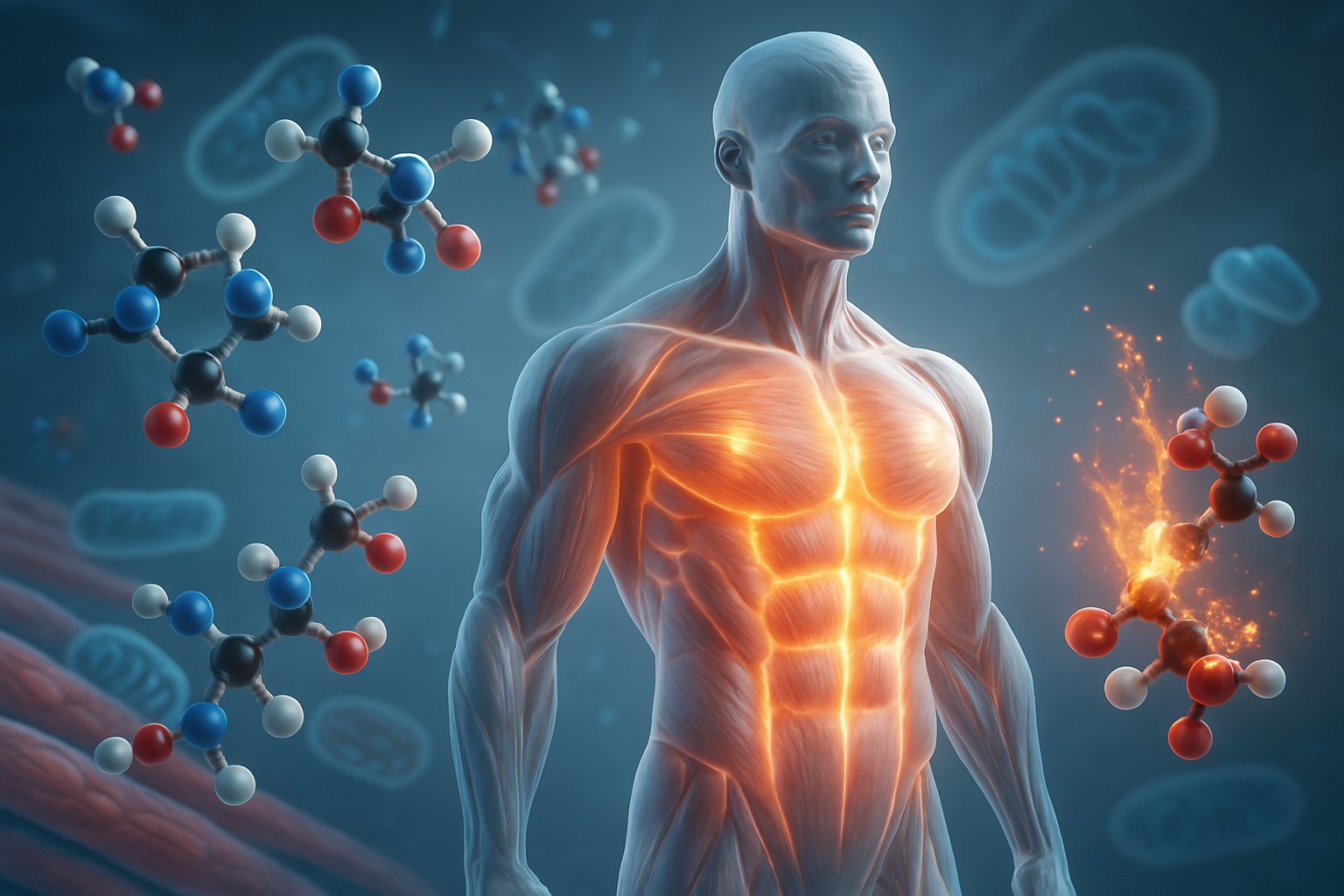
Creatine is a naturally occurring compound made from amino acids that your body produces and stores primarily in muscle tissue. It works by helping create adenosine triphosphate (ATP), which provides quick energy bursts during high-intensity activities.
Overview of Creatine’s Role in the Body
Creatine is a compound you naturally have in your body[2] that comes from amino acids used to build proteins. Your muscles store most of it in a form called phosphocreatine or creatine phosphate.
Your body makes creatine in small amounts daily through your liver, pancreas, and kidneys. About half of your body’s creatine comes from food sources like meat and seafood.
Creatine is found in:
- Muscle tissue (95% of total creatine)
- Brain tissue
- Heart
- Other organs in smaller amounts
The compound also exists in your brain, where it may support cognitive function. Women normally have lesser creatine than men[2], which may explain why some research suggests women might benefit more from supplementation.
Your muscles hold creatine as an energy reserve for when you need quick power during exercise or physical activity.
Types of Creatine Supplements
Creatine monohydrate is the most common and well-studied form of creatine supplement. Most studies have looked at creatine monohydrate[2], making it the gold standard for research.
Other forms include creatine ethyl ester, creatine hydrochloride, and creatine magnesium chelate. However, studies show these alternatives don’t work better than creatine monohydrate.
| Supplement Type | Key Features | Research Support |
|---|---|---|
| Creatine Monohydrate | Most studied, proven effective | Extensive |
| Creatine Ethyl Ester | Claimed better absorption | Limited, less effective |
| Creatine Hydrochloride | Better water solubility | Minimal evidence |
| Liquid Creatine | Convenient form | Same as monohydrate |
There’s not much evidence that other forms work better[2] than the standard monohydrate version.
Creatine and ATP Energy Production
Phosphocreatine helps you make adenosine triphosphate (ATP)[2], which serves as the primary energy currency for muscle contractions. ATP provides the immediate energy your muscles need during intense exercise.
When you take creatine supplements, your muscles convert it into phosphocreatine by adding phosphoric acid. This process increases your muscle’s phosphocreatine stores.
The energy production process works like this:
- Muscles use stored phosphocreatine
- Phosphocreatine releases energy to rebuild ATP
- Fresh ATP powers muscle contractions
- The cycle repeats during exercise
The extra creatine can help your muscles make more ATP faster[2] as you use it during high-intensity activities. This explains why creatine works best for short bursts of intense exercise rather than endurance activities.
The increased ATP production allows for more powerful muscle contractions and faster energy regeneration between sets or repetitions.
Standard Dosage and Supplementation Protocols
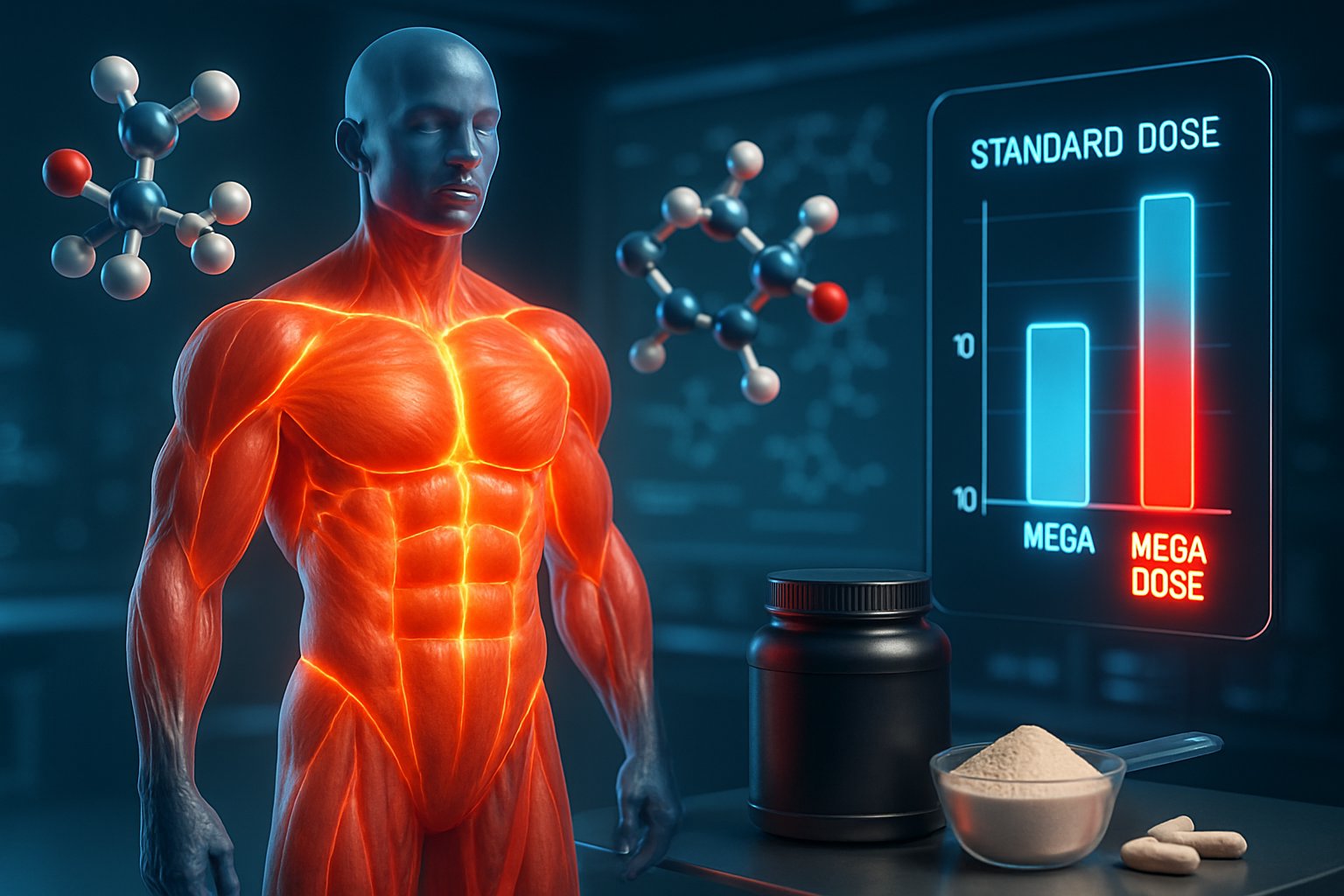
Most people follow either a 3-5 gram daily maintenance approach or start with a higher loading dose of 20-25 grams for 5-7 days. Creatine monohydrate remains the most studied and effective form available.
Recommended Daily Dosages
The standard dosage for creatine supplementation is around 3-5 grams per day[3], taken either before or after exercise. This amount provides enough creatine to maintain saturated muscle stores once they reach full capacity.
Research shows that supplementation with 4-5 grams of creatine per day for 18 months has no side effects[4]. Studies have also found that doses of 5 to 20 grams may improve short-term memory and intelligence[1] in healthy people.
Body weight can influence optimal dosing. Larger individuals may benefit from doses closer to 5 grams daily, while smaller people often see results with 3 grams.
Daily Maintenance Dosing:
- Small adults (under 150 lbs): 3 grams
- Average adults (150-200 lbs): 3-5 grams
- Large adults (over 200 lbs): 5 grams
Creatine Loading and Maintenance Phases
The creatine loading phase involves taking higher doses to saturate muscle cells faster. Athletes typically consume 20-25 grams daily for 5-7 days during this phase.
Loading allows your body to take in extra amounts of creatine to build an energy inventory[5]. This approach helps people experience benefits sooner than maintenance dosing alone.
After loading, users switch to 3-5 grams daily for maintenance. Taking the maintenance dose over a longer time may be more convenient[1] since it involves just one dose per day.
People can skip loading entirely and go straight to maintenance dosing. This method takes about 28 days to reach full muscle saturation compared to 5-7 days with loading.
Loading Protocol:
- Days 1-7: 20-25 grams split into 4-5 doses
- Day 8+: 3-5 grams daily maintenance
Forms of Creatine and Supplementation Methods
Creatine monohydrate is the most well-studied, effective, and inexpensive form available. Other forms exist but lack the extensive research backing that creatine monohydrate has accumulated over decades.
Creatine powder is typically mixed with water or juice. The powder dissolves better in warm liquids and can be taken before or after workouts without significant timing differences.
Some people prefer capsules for convenience, though powder remains more cost-effective. Capsules require multiple pills to reach effective doses, making powder more practical for most users.
Common Forms:
- Creatine monohydrate powder – Most researched and affordable
- Creatine capsules – Convenient but more expensive
- Flavored creatine – Improved taste but often contains additives
Users should avoid taking large single doses to prevent stomach discomfort. Athletes who supplemented with 10 grams in a single serving experienced diarrhea and stomach upset[1], while those taking 2-5 gram doses had no issues.
Immediate Effects of Taking Mega Doses of Creatine
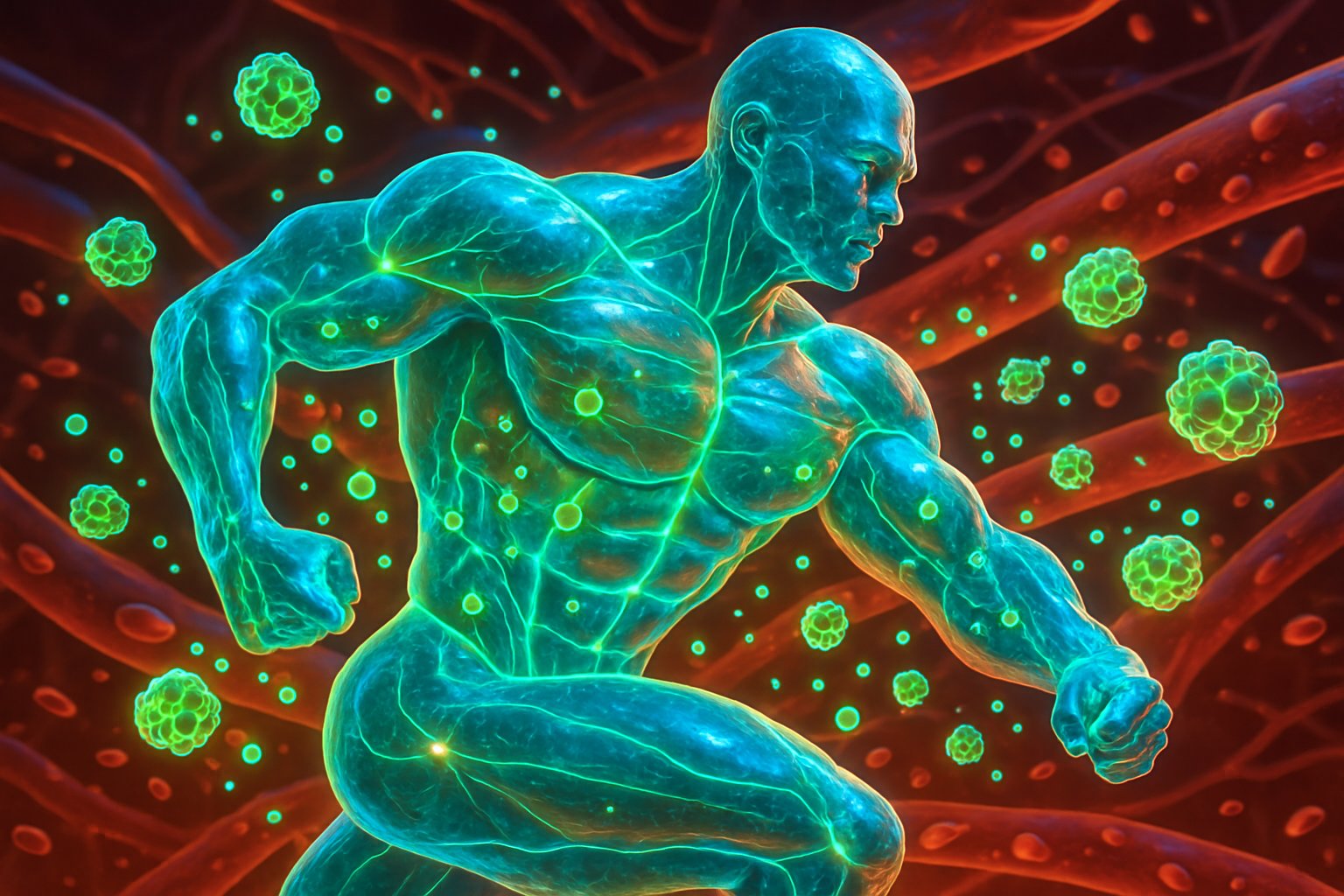
Taking extremely high doses of creatine can trigger several uncomfortable side effects within hours. The most common problems include rapid water weight gain, stomach upset, and disrupted fluid balance throughout the body.
Water Retention and Bloating
Mega doses of creatine cause muscles to pull large amounts of water from other parts of the body. This creates noticeable bloating and rapid weight gain within the first few hours.
Athletes often gain 2-5 pounds of water weight when they take excessive amounts. The water moves into muscle cells, making them appear swollen and tight.
Creatine loading can result in significant body weight gain[1] due to increased water intake into muscles. This effect becomes more pronounced with higher doses.
The bloating feels uncomfortable and can restrict normal movement. Some people report feeling “puffy” or having clothes fit more tightly around their midsection and limbs.
Digestive and Gastrointestinal Discomfort
Large single doses of creatine frequently cause stomach problems. These symptoms usually appear within 30-60 minutes of taking the supplement.
Common digestive issues include:
- Nausea and vomiting
- Diarrhea
- Stomach cramping
- Belching and gas
Athletes who took 10 grams in a single serving experienced diarrhea, stomach upset, and belching[1]. Those taking 2-5 grams did not report these problems.
The digestive system cannot process large amounts of creatine efficiently. Excess creatine sits in the stomach and intestines, drawing water and causing irritation.
Dehydration and Fluid Balance
Mega doses disrupt the body’s normal fluid balance by pulling water into muscles too quickly. This leaves other body parts without enough water to function properly.
High doses can cause electrolyte imbalances with sodium and potassium[6], leading to dehydration symptoms. The rapid water shift affects normal cell function.
Early signs of dehydration include:
- Dry mouth and increased thirst
- Headaches
- Muscle cramps
- Dizziness
Creatine pulls water into muscle cells, increasing dehydration risk[7] in surrounding tissues. This effect becomes dangerous when someone takes far more than recommended doses.
The body struggles to maintain proper hydration levels when creatine forces such dramatic water movement.
Potential Health Risks and Side Effects
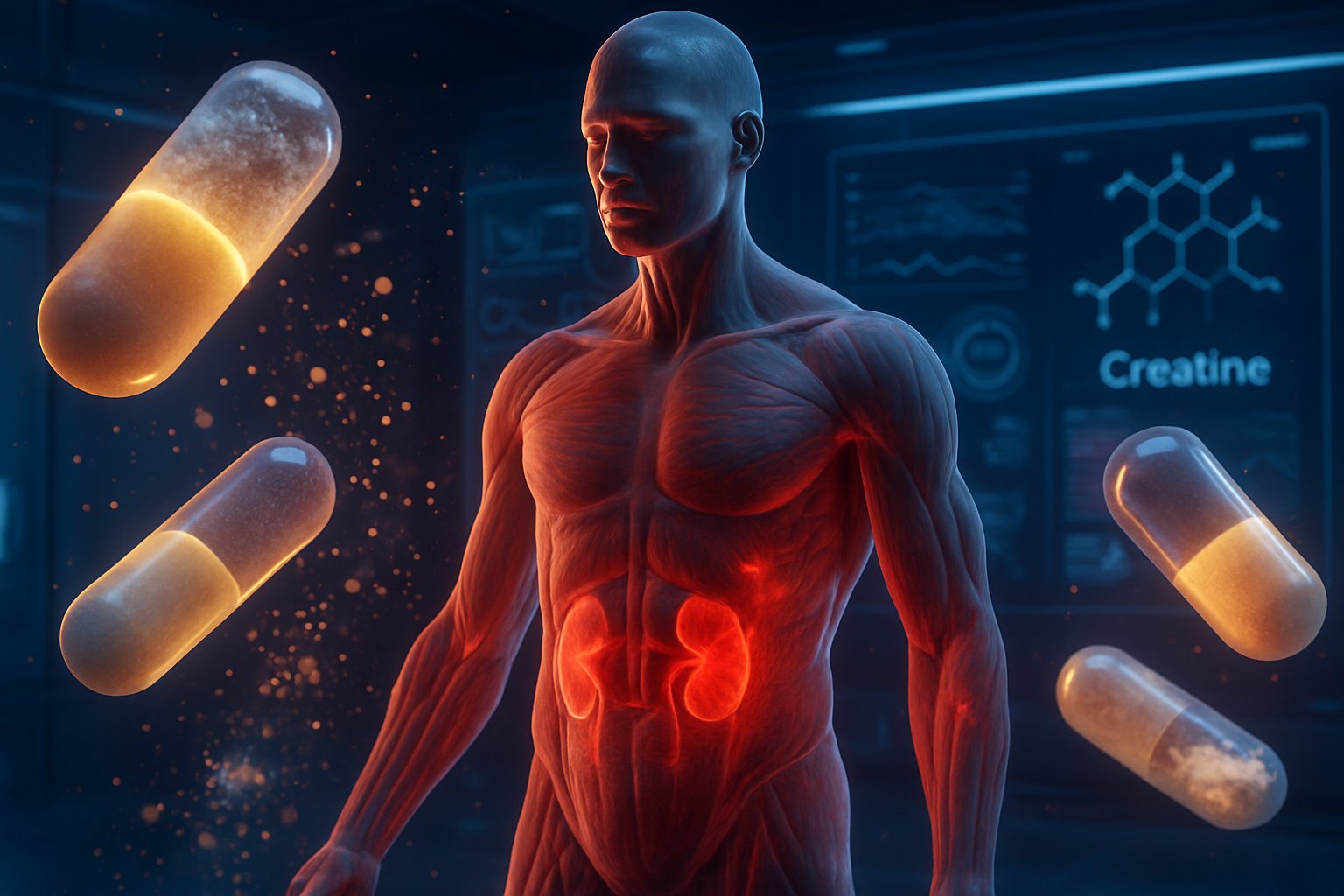
Taking mega doses of creatine can lead to several health complications, with kidney-related issues being the primary concern. People with existing kidney problems face higher risks, and muscle cramping may increase with excessive supplementation.
Kidney Function and Possible Kidney Damage
The kidneys process creatine and its breakdown product creatinine, making them vulnerable when someone takes extremely high doses. Excessive creatine intake forces the kidneys to work harder to filter and eliminate unused supplement from the body.
Taking more than the recommended 3-5 grams daily can strain kidney function over time. The body can only store limited amounts of creatine in muscles, so excess creatine gets excreted through urine[1].
Warning signs of kidney stress include:
- Dark or decreased urine output
- Swelling in hands, feet, or face
- Persistent fatigue
- Back pain near the kidney area
Research shows that normal doses don’t harm healthy kidneys. However, mega doses create an unnecessary burden on these vital organs and provide no additional benefits.
Impact on Muscle Cramps and Cramping
Mega doses of creatine can increase the risk of muscle cramps through dehydration and electrolyte imbalances. The supplement pulls water into muscle cells, which can leave other body tissues with less fluid.
Dehydration effects from excessive creatine include:
- Reduced blood volume
- Poor temperature regulation
- Electrolyte disruption
- Increased cramping frequency
Athletes taking high doses often report more severe cramping during exercise. This happens because creatine changes how muscles use and store water.
The cramping risk increases when people don’t drink enough water while taking large amounts. Taking too much creatine can result in stomach discomfort[1] and digestive issues that compound dehydration problems.
Risk Factors for Pre-Existing Kidney Conditions
People with existing kidney problems face serious risks when taking mega doses of creatine. Pre-existing conditions that increase danger include diabetes, high blood pressure, and chronic kidney disease.
Damaged kidneys cannot properly filter excess creatine, leading to dangerous buildup in the blood. This creates a cycle where kidney function gets worse over time.
High-risk individuals should avoid creatine entirely:
- Anyone with kidney disease
- People taking kidney-affecting medications
- Those with diabetes or high blood pressure
- Individuals over 60 with declining kidney function
Even people with mild kidney problems can experience rapid deterioration when taking excessive amounts. People with impaired kidney function should check with their healthcare professional[1] before using any creatine supplements.
Blood tests can reveal early kidney damage before symptoms appear, making medical supervision essential for at-risk populations.
Does Mega Dosing Enhance Performance or Muscle Growth?

Research shows mixed results for mega doses above the standard 5g daily intake. Some studies indicate modest improvements in strength and muscle mass, while others suggest minimal additional benefits beyond saturation levels.
Effects on Muscle Mass and Strength
Studies examining high-dose creatine supplementation[8] have found promising results for muscle growth and strength gains. Research published in the Journal of Applied Physiology showed a 6% increase in muscle phosphocreatine concentration with 20g daily doses.
The same study reported 20-25% strength improvements in participants using higher doses. These gains occurred during short-term loading phases lasting 4-7 days.
Additional research in the journal Nutrients found greater lower-body strength gains in subjects taking more than 5g daily. However, the statistical significance was marginal at p = 0.068.
Key strength outcomes from mega dosing:
- Enhanced maximal strength output
- Faster initial strength gains
- Increased fat-free mass development
- Improved resistance training performance
The muscle growth benefits appear most pronounced during intense training periods. Athletes engaged in heavy resistance training may experience greater gains compared to recreational lifters.
Athletic Performance Outcomes
Athletes using mega doses often report improved performance metrics during high-intensity activities. The enhanced phosphocreatine stores provide more immediate energy for explosive movements.
Athletic performance improvements[9] include better power output during repeated sprint efforts. Athletes may also experience reduced fatigue between training sets.
Sports nutrition experts note that heavier athletes might benefit more from higher doses. The logic stems from questioning why all athletes take the same 5g dose[10] regardless of body weight differences.
Performance benefits observed:
- Increased power during explosive movements
- Better recovery between high-intensity intervals
- Enhanced endurance during repeated efforts
- Improved training volume capacity
However, creatine supplementation effectiveness varies across populations[11]. Some athletes may not respond significantly to any dosage due to genetic factors or baseline creatine levels.
Plateau Effects and Diminished Returns
Muscle creatine stores have finite capacity regardless of intake amount. Once tissues reach saturation, additional supplementation provides minimal benefits.
Clinical research and bodybuilder experiences suggest no added muscle growth benefits beyond 5g daily[12] for most individuals. The body simply excretes excess creatine through urine.
Saturation typically occurs within 5-7 days of consistent supplementation. Higher doses may reach saturation faster but don’t increase maximum storage capacity.
| Dose Range | Saturation Time | Additional Benefits |
|---|---|---|
| 3-5g daily | 10-14 days | Standard maintenance |
| 10-15g daily | 5-7 days | Faster saturation |
| 20-30g daily | 3-5 days | Minimal extra benefit |
Long-term mega dosing may lead to tolerance effects. Some users report diminished response after extended periods of high intake.
The plateau effect explains why a 15% performance increase might occur with mega doses[13] but similar results often happen with standard dosing over time.
Long-Term Considerations and Safety
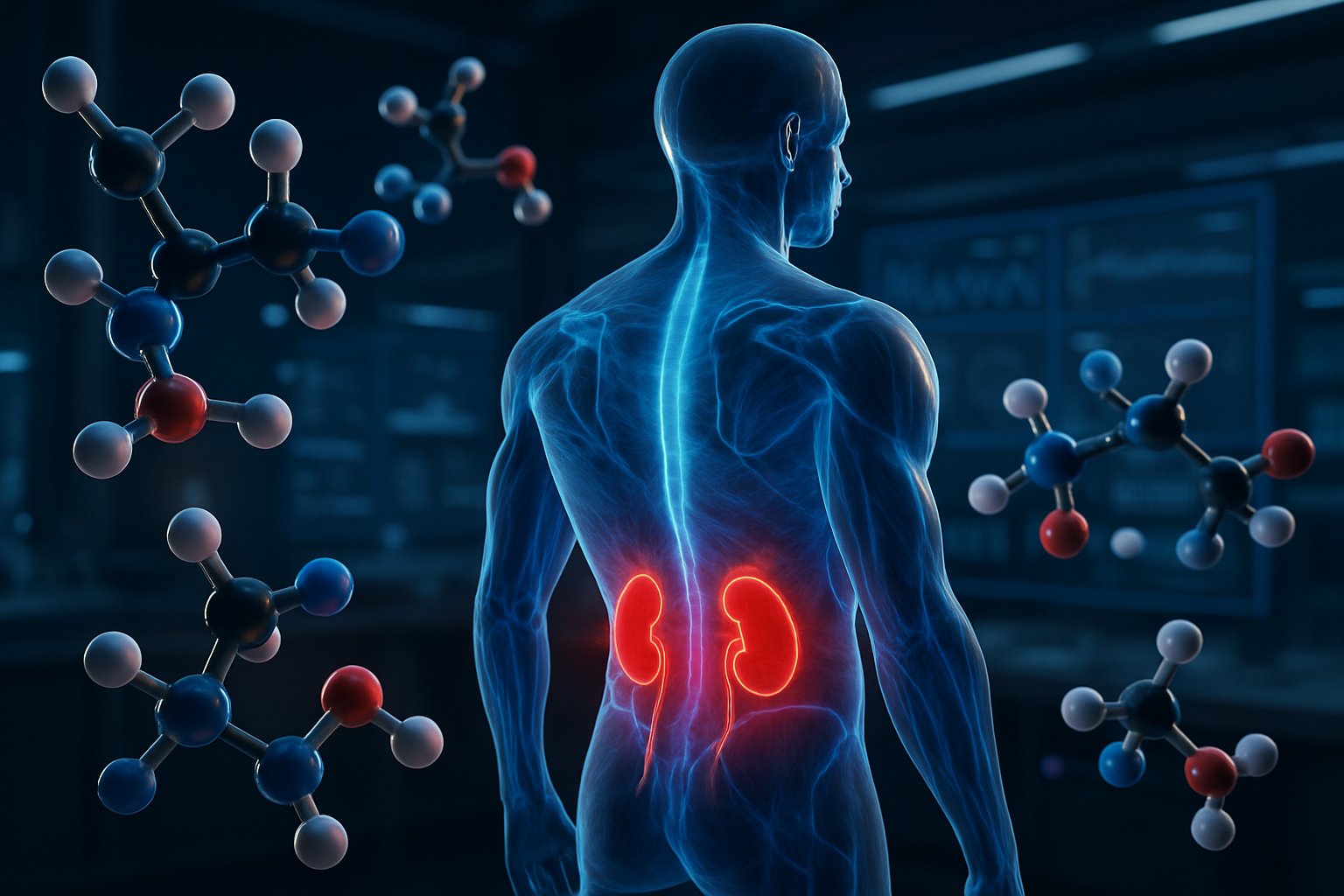
Taking mega doses of creatine for extended periods raises important questions about sustained health effects and the body’s ability to process excess amounts. Understanding how chronic high-dose use affects aging processes and recognizing overdose symptoms becomes critical for safe supplementation.
Healthy Aging and Chronic Health Impacts
Research suggests that standard creatine doses may support muscle and bone health as people age. Studies in older adults show benefits when combining 5 to 22 grams daily with resistance training.
However, mega doses create different long-term risks. High-dose creatine supplementation[8] taken for extended periods may lead to increased water retention and digestive issues.
The kidneys must work harder to filter excess creatine from the blood. While creatine is generally safe for up to five years[14] at normal doses, mega doses haven’t been studied long-term.
People with kidney problems face higher risks. Those taking medications should consult healthcare providers before using high doses.
Key Long-Term Risks:
- Kidney strain from filtering excess creatine
- Chronic digestive discomfort
- Persistent water retention and bloating
- Unknown effects on organ function
Role of Amino Acids in Creatine Processing
The body creates creatine from three amino acids: glycine, arginine, and methionine. This process happens mainly in the kidneys, liver, and pancreas.
When someone takes mega doses, these organs must work overtime. The liver processes the extra amino acids while the kidneys filter out what the body can’t use.
Arginine plays a special role in this process. It helps make creatine but also supports blood flow and immune function. Taking huge amounts of creatine may affect how the body uses arginine for other important tasks.
The pancreas also gets involved in creatine metabolism. High doses could potentially stress this organ over time, though research on this topic remains limited.
Amino Acid Processing Effects:
- Increased workload on liver and kidneys
- Potential competition for arginine use
- Excess amino acids converted to waste products
- Possible strain on pancreatic function
Signs and Symptoms of Creatine Overdose
Taking too much creatine produces several warning signs. Stomach discomfort[1] ranks as the most common immediate symptom.
Digestive symptoms include diarrhea, nausea, and stomach cramps. These often happen when people take more than 10 grams at once.
Water-related symptoms involve severe bloating and rapid weight gain from fluid retention. Some people gain 3-5 pounds within days of starting mega doses.
Warning signs that require medical attention include persistent vomiting, severe abdominal pain, or changes in urination patterns.
The body can only store limited amounts of creatine in muscles. Excess amounts get excreted through urine[1], making mega doses wasteful and potentially harmful.
Overdose Symptoms:
- Severe stomach pain and cramping
- Persistent diarrhea or nausea
- Extreme bloating and water retention
- Changes in urine color or frequency
- Muscle cramps or weakness
Frequently Asked Questions
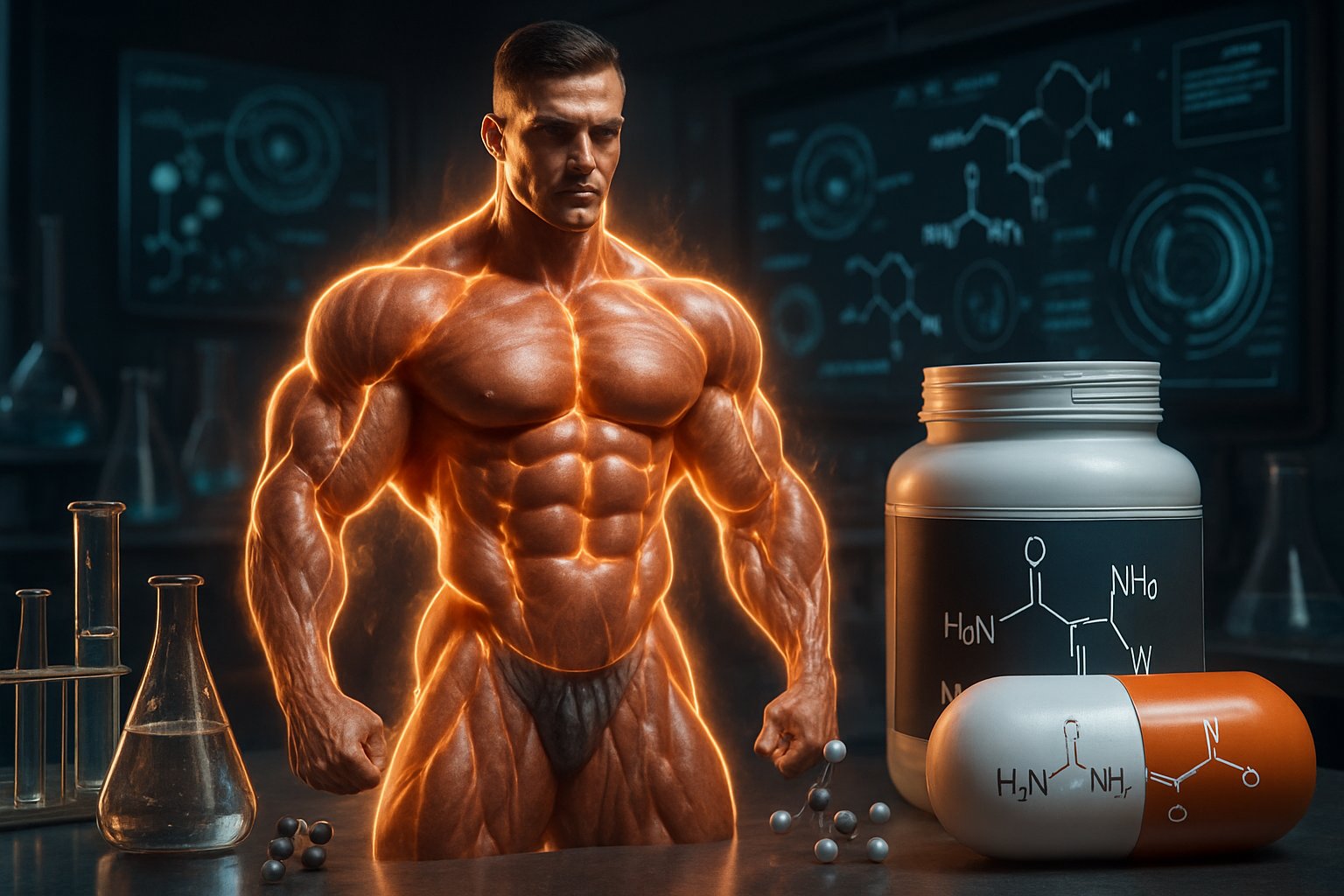
Taking mega doses of creatine can cause digestive issues, water retention, and potential strain on organs. Most concerns arise from exceeding the standard 3-5 gram daily maintenance dose that research supports as safe and effective.
What are the potential side effects of consuming high doses of creatine?
High doses of creatine commonly cause stomach discomfort and digestive problems[1]. Athletes who took 10 grams in a single serving experienced diarrhea, stomach upset, and belching.
Taking doses between 2-5 grams typically does not produce these same digestive side effects. Bloating occurs frequently during creatine loading phases[1] when people consume 20-25 grams daily.
Nausea and cramping may develop when someone takes excessive amounts on an empty stomach. These symptoms usually resolve when the person reduces their dosage to recommended levels.
Dehydration can occur if someone takes large doses without increasing water intake. The body needs extra fluid to help muscles store the additional creatine properly.
How does exceeding recommended creatine dosage levels affect kidney function?
Current research shows that creatine does not harm kidney health in people with normal kidney function[1]. Studies involving people with type 2 diabetes found no kidney damage after 12 weeks of 5-gram daily doses.
People with existing kidney problems should consult healthcare providers before using any creatine supplements. The kidneys process excess creatine, so damaged kidneys may struggle with higher doses.
Long-term studies on people with kidney disease remain limited. Most safety data comes from healthy adults using standard doses for several months.
Blood creatinine levels may increase slightly during supplementation. This increase reflects normal creatine metabolism rather than kidney damage in healthy individuals.
Can taking large amounts of creatine lead to water retention and weight gain?
Creatine loading causes significant weight gain due to increased water storage in muscles[1]. This water retention accounts for most of the rapid weight increase people notice.
Muscles store approximately 3-4 grams of water for every gram of creatine they absorb. Someone using 20 grams daily during loading may gain 2-4 pounds within the first week.
This weight gain represents muscle hydration rather than fat accumulation. The extra water helps muscles function better during high-intensity exercise.
People who skip the loading phase and use 3-5 grams daily experience less dramatic water retention. The weight gain occurs more gradually over several weeks.
Is there a risk of liver damage from consuming excessive creatine?
No scientific evidence shows that creatine causes liver damage in healthy people. The liver naturally produces creatine along with the kidneys and pancreas.
Studies lasting several months have not found elevated liver enzymes in creatine users. Liver function tests remain normal even during high-dose loading phases.
People with existing liver conditions should discuss creatine use with their doctors. The liver processes many supplements, so damaged livers may respond differently.
Some people mistakenly blame creatine for liver problems caused by other supplements or medications. Proper medical evaluation can identify the actual cause of liver issues.
What is the maximum safe amount of creatine one can take per day?
The standard maintenance dose of 3-5 grams daily provides optimal muscle saturation[1] without side effects. This amount maintains creatine stores after the initial loading period.
Loading phases use 20-25 grams daily divided into 4-5 doses for 5-7 days. Taking this amount as a single dose increases the risk of digestive problems.
Taking more than the maintenance dose causes the body to excrete excess creatine through urine[1]. Higher doses provide no additional benefits once muscles reach saturation.
Some research examines doses up to 30 grams daily for specific medical conditions. These studies occur under medical supervision with careful monitoring.
How does long-term use of high doses of creatine impact health and athletic performance?
Long-term studies show creatine remains safe for healthy adults using standard doses for several years. Research in older adults found benefits when combining 5-22 grams with resistance training[1].
Athletic performance benefits plateau once muscles reach creatine saturation. Taking mega doses does not produce greater strength or power improvements.
Consistently high doses may cause ongoing digestive discomfort and bloating. These side effects can interfere with training and daily activities.
The body adapts to regular creatine use over time. People who use appropriate doses maintain steady performance benefits without negative health effects.
References
- Can You Take Too Much Creatine? Side Effects and Dosage. https://www.healthline.com/nutrition/too-much-creatine Accessed October 27, 2025
- Creatine Supplements: Benefits and Side Effects. https://www.webmd.com/vitamins-and-supplements/creatine Accessed October 27, 2025
- General 2 — Maria Tanielian RD/Dt.P. https://www.theproteandietitian.com/blog/creatine-cheat-sheet Accessed October 27, 2025
- Recommended dosage and possible side effects of creatine. https://ostrovit.com/en/blog/recommended-dosage-and-possible-side-effects-of-creatine-1628755818.html Accessed October 27, 2025
- Is the Creatine Loading Phase Worth It?. https://health.clevelandclinic.org/creatine-loading-phase Accessed October 27, 2025
- What happens if you take too much creatine at once? – The Supplement Pro. https://thesupplement.pro/what-happens-if-you-take-too-much-creatine-at-once Accessed October 27, 2025
- What Are the Potential Side Effects of Too Much Creatine? – Gains in Bulk. https://gainsinbulk.com/blogs/news/can-you-take-too-much-creatine Accessed October 27, 2025
- High-Dose Creatine Supplementation: Does 20-30g Really Unlock Greater — Red Dragon Nutritionals. https://www.reddragonnutritionals.com/blogs/news/high-dose-creatine-supplementation-does-20-30g-really-unlock-greater-gains Accessed October 27, 2025
- Athletic performance improvements. https://www.verywellfit.com/what-happens-to-your-body-when-you-take-creatine-8553126 Accessed October 27, 2025
- High-Dose Creatine: What You Need to Know. https://www.mysupplementstore.com/blog/highdose-creatine-what-you-need-to-know/ Accessed October 27, 2025
- Creatine Supplementation for Muscle Growth: A Scoping Review of Randomized Clinical Trials from 2012 to 2021. https://pmc.ncbi.nlm.nih.gov/articles/PMC8949037/ Accessed October 27, 2025
- 'Mega' dosing creatine by Alex Kikel. https://www.professionalmuscle.com/forums/index.php?threads/mega-dosing-creatine-by-alex-kikel.183514/ Accessed October 27, 2025
- a 15% performance increase might occur with mega doses. https://www.menshealth.com/uk/nutrition/a65157906/creatine-super-dose/ Accessed October 27, 2025
- Creatine. https://www.mayoclinic.org/drugs-supplements-creatine/art-20347591 Accessed October 27, 2025
